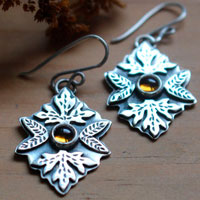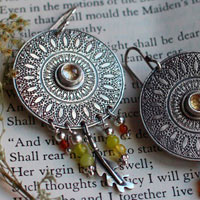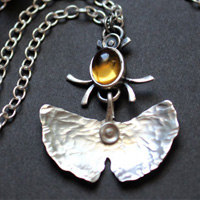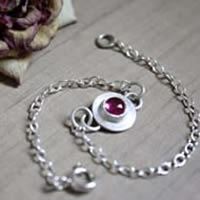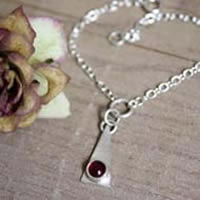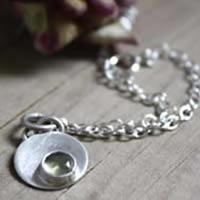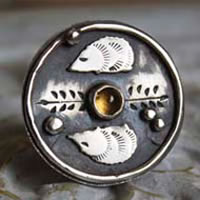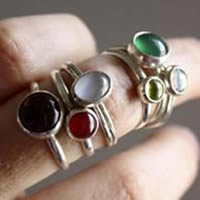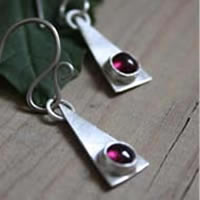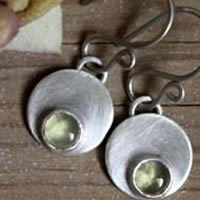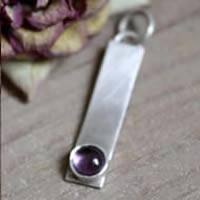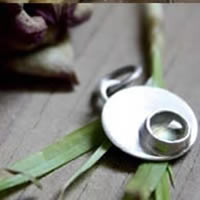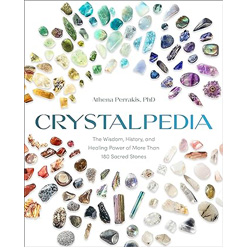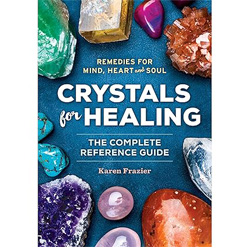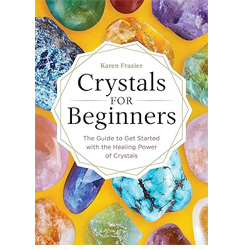- Jewelry
- Inspiration
- Our imagination
- Birthstones
- Celebrating with Eternal Flowers
- Druids and druidesses
- Flower meanings
- History, archeology jewelry
- History and healing properties of metals
- History and healing properties of stone
- Illumination jewelry
- Japanese symbols
- Maya calendar jewelry
- Stone color symbolism
- Stones catalogue
- Wedding anniversaries
- Searches a theme on the site
- Good Deals
- Paintings
- About
- Contact
JEWELRY
- Anklet
- Bracelets
- Brooches
- Cufflinks
- Earrings
- Pendants & Necklaces
- Rings
- Draw your jewelry
- How to clean your jewel
- Metal we used
INSPIRATION
- Our imagination
- Birthstones
- Celebrating with Eternal Flowers
- Druids and druidesses
- Flower meanings
- History, archeology jewelry
- History and healing properties of metals
- History and healing properties stones
- Illumination jewelry
- Japanese symbols
- Maya calendar jewelry
- Stone color symbolism
- Stones Catalogue
- Wedding anniversaries
- Searches a theme on the site
Citrine: history, healing properties and lithotherapy
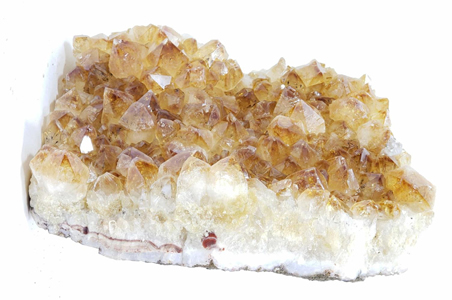
Citrine properties

Citrine is a transparent quartz with shades ranging from pale yellow to intense golden hues. Its name derives from the Latin Citrus, referring to the color of lemon. Its characteristic shade is due to a low concentration of iron oxide (Fe³⁺) in its crystal structure, a phenomenon similar to that which creates different hues in other quartz varieties, like amethyst. Citrine has a hardness of 7 on the Mohs scale, making it resistant to scratches and ideal for jewelry.
Although widely appreciated for its beauty, natural citrine is relatively rare in nature. A large portion of the "citrines" available on the market are, in fact, heat-treated amethysts. When heated, their purple hue transforms into a golden yellow, sometimes with orange undertones. This distinction is subtle but essential: natural citrines generally display a softer color, closer to lemon yellow, whereas heat-treated amethysts tend to exhibit deeper shades, ranging from amber to orange.
The name "citrine" was formalized in 1556 by Georg Bauer, a German specializing in mineralogy. Before that, this stone was known by various names, including "yellow quartz." Other names have also emerged over the centuries: yellow hyaline quartz, Bohemian topaz, quartz topaz, Cairngorm, Madeira topaz, Bahia topaz, Palmyra topaz, Salamanca topaz, Spanish topaz, golden topaz, or even saffronite. These multiple denominations underscore the fascination citrine has held throughout the ages.
The main deposits of natural citrine are found in Brazil, Russia, Madagascar, and the United States. These regions are known for producing high-quality specimens, particularly Brazilian citrines, prized for their bright hues and exceptional clarity. Citrine crystallizes in the rhombohedral system, often forming prismatic crystals with striated faces, a feature that can help differentiate it from imitations.
History, beliefs and legends about citrine
In antiquity and the Middle Ages, citrine was often confused with topaz, a common mistake due to their visual similarity. This confusion arose because, although the two stones belong to different mineral families (quartz for citrine and silicate for topaz), they share similar yellow hues. This misidentification led to citrine being used in ornaments considered to be topaz, allowing those who could not afford the precious topaz to have equally elegant jewelry at a lower cost. This mix-up closely linked the history of the two stones, influencing their perception throughout the ages.
The ancient Egyptians associated citrine with the goddess Sekhmet, the lion-headed warrior deity, symbolizing protection and solar strength. Citrine, with its golden glow, was seen as a solar talisman offering vigor and vitality. Many citrine jewels and amulets were worn to invoke Sekhmet’s protection against diseases and evil influences. This connection to the sun and protection strengthened citrine’s role in Egyptian rituals.
By 300 BCE, citrine was also used in ancient Greece, where it was dedicated to Demeter, the goddess of the earth, harvests, and fertility. Its bright glow, reminiscent of the sun and summer warmth, made it an ideal stone to celebrate the abundance of crops and the cycle of life, from fertility to prosperity. The Greeks wore citrine not only to attract material wealth but also to symbolize fertility and the generosity of nature.
Some scholars identify citrine as one of the gemstones on the breastplate of Aaron, mentioned in the Bible, specifically in the Book of Exodus. It is sometimes referred to as Chrysolitus or the "golden stone." However, the precise identification of this stone remains debated, with some experts suggesting it could be topaz or beryl. Nevertheless, this biblical ambiguity adds a mysterious and spiritual dimension to citrine, linking it to ancient religious traditions.
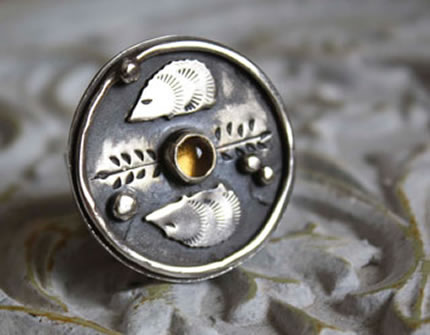
In the 19th century, with the rise of Art Deco and the explosion of high-end jewelry that extended from the interwar period, citrine experienced a resurgence in popularity. Its golden hues perfectly complemented the bold, geometric aesthetics of the time. Hollywood stars of the 1920s and 1930s, such as Greta Garbo and Joan Crawford, wore citrine jewelry, adding a touch of luminous elegance to the red carpets. This renewed interest solidified citrine as a symbol of glamour and sophistication.
This gemstone also holds astrological significance, being the birthstone associated with November, alongside topaz.
It is also the anniversary stone for the 13th year of marriage, symbolizing durability and warmth in the relationship. With its warm glow, citrine evokes light, solar energy, and joy—qualities often associated with the evolution of a romantic relationship over time.
In addition to its astrological and marital ties, citrine has been historically regarded as a stone of abundance and prosperity. It is considered a stone of positive energy and transformation, often worn to attract material wealth and success. Modern beliefs also attribute to it the ability to enhance mental clarity and focus, further reinforcing its role in spiritual practices and meditation.
Mines: Germany, Austria, Madagascar, Brazil, Russia, USA, and Spain.
Healing properties and benefits of citrine
Throughout the long history of humanity, people have attributed various properties, virtues and healing beliefs to citrine. The information presented here is shared from a cultural and historical perspective, in order to illustrate the symbolic relationship that has developed between this stone and different civilizations over the centuries. Like the preceding elements, it is part of our scientific and historical approach. It does not constitute any form of therapeutic or medical recommendation, nor does it reflect our personal beliefs.
- Citrine is recommended for chronic infections of the liver, bladder, pancreas, and gallbladder, where it acts as an energetic purifier, helping to eliminate toxins from the body.
- It is also known to promote a healthy metabolism, aiding digestion and regulating hormonal imbalances.
- This stone enhances the harmony of the endocrine system, thereby regulating hormone production by the thyroid. A proper hormonal balance is essential for the body’s overall function, especially for managing stress, fatigue, and weight regulation.
- Thanks to its dynamic energy, citrine is a powerful ally for those suffering from chronic fatigue or exhaustion. It boosts endurance and helps restore vitality by balancing the body’s energy centers. This ability to revitalize the body makes citrine highly valued by those needing to strengthen their life force on a daily basis.
- Citrine also has positive effects on physical appearance. By improving blood circulation and detoxifying the body, it contributes to the health of the skin, hair, and nails, making them more radiant and strong. It is also used to soothe skin allergies, irritations, and inflammations, as well as to treat conditions like acne.
- Citrine can ease digestive disorders, particularly food intolerances and stomach-related issues. It supports the proper functioning of the digestive system, helping to prevent discomforts such as bloating and intestinal distress.
- When used as an elixir, citrine is especially effective in alleviating symptoms related to women’s hormonal cycles. It soothes menstrual symptoms, such as cramps and mood swings, as well as menopausal discomforts like hot flashes and fatigue. This natural support for women’s health demonstrates citrine’s therapeutic versatility.
- Thanks to its ability to clear the mind, citrine is also used to enhance concentration, memory, and creativity. It is ideal for those looking to boost their intellectual performance, whether at work or in studies.
- Mentally and emotionally, citrine is often called the “stone of abundance” due to its capacity to attract prosperity and joy. It dissipates negative energies and fosters self-confidence, self-esteem, and optimism.
 Please note that all healing properties attributed to stones come from ancient traditions and various cultural sources. This information is provided for informational purposes only and does not constitute medical advice. In case of any health concerns, it is recommended to consult a qualified professional.
Please note that all healing properties attributed to stones come from ancient traditions and various cultural sources. This information is provided for informational purposes only and does not constitute medical advice. In case of any health concerns, it is recommended to consult a qualified professional.
Citrine jewelry samples
To learn more about litotherapy, we recommend you the following books:

